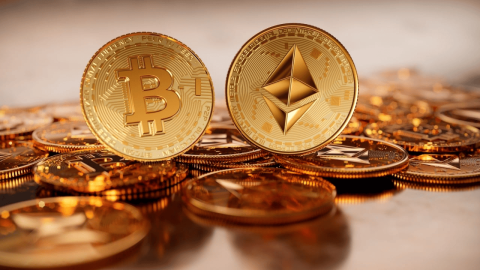BitMine's New Leadership Plans Expanding Ethereum Holdings as ETH Remains Most Promising Crypto and DeFi Platform
BitMine Immersion Technologies is entering a new era of governance and strategic direction. With the appointment of Chi Tsang as CEO and the onboarding of three independent board members, the company is steering away from its mining roots and carving a path toward becoming a full-fledged digital-asset financial institution. As global markets shift alongside Ethereum’s evolution, BitMine’s transformation underscores its ambition to act as a bridge between traditional finance and the fast-emerging blockchain economy.
Strategic Leadership Overhaul
BitMine’s leadership restructuring marks a decisive step in its broader strategic metamorphosis. The firm appointed Chi Tsang as Chief Executive Officer and a member of its Board of Directors, while simultaneously adding Robert Sechan, Olivia Howe, and Jason Edgeworth as independent directors. The appointments took effect immediately and signal a deliberate effort to align governance with the company’s new digital-asset focus.
Outgoing CEO Jonathan Bates, who oversaw BitMine’s transition from a mining enterprise to a publicly listed digital asset powerhouse, described the journey as “an incredible evolution.” He expressed confidence that Tsang and his newly formed board possess both the technical expertise and strategic foresight to propel BitMine into its next growth chapter.
Chairman Thomas “Tom” Lee framed the leadership changes as pivotal for BitMine’s repositioning within a capital-markets environment increasingly shaped by Ethereum. Lee emphasized that the firm now stands at “a critical moment,” as Ethereum’s technological innovations begin to influence global financial behavior. He described the company’s new phase as part of the broader “Supercycle Ethereum era,” positioning BitMine as a channel between conventional and decentralized financial systems.
New CEO Sets Vision for Financial Evolution
In his first public statement as CEO, Chi Tsang drew an analogy between blockchain’s current expansion and the technological disruptions of the 1990s—namely, the rise of the internet and mobile communications. He asserted that BitMine’s deep involvement in Ethereum and its credibility within both Wall Street and the crypto community uniquely position it to become a foundational institution in the next generation of finance.
Tsang’s appointment not only reshapes leadership but also aligns the company’s vision with long-term digital-asset macro trends. His background in global finance and decentralized systems suggests a mandate that blends investment management with blockchain innovation. The ultimate goal, according to Tsang, is to anchor BitMine’s identity in the infrastructure that supports the digital economy, rather than merely participating in the speculative aspects of cryptocurrency mining.
Ethereum Holdings and Financial Strength
BitMine’s leadership refresh coincides with a surge in its Ethereum holdings—a move that underscores the company’s new financial posture. As of the latest filing, BitMine manages over 3.5 million ETH, representing nearly 3 percent of the total Ethereum supply. This staggering accumulation situates the firm among the largest single holders of Ether on the planet.
The company’s digital-asset treasury now totals approximately $13.2 billion, comprising Ethereum, Bitcoin, cash reserves, and a portfolio of early-stage “moonshot” investments. Of that amount, roughly $400 million remains in unencumbered cash, reflecting a liquidity position strong enough to fund ongoing strategic initiatives.
What stands out is BitMine’s accelerated accumulation pace. Within a single week, it added more than 110,000 ETH, nearly tripling the previous week’s buying rate. Company disclosures indicate an aggressive target—to own up to 5 percent of Ethereum’s circulating supply—an ambition that telegraphs a long-term conviction in the blockchain’s role as the backbone of future financial networks.
Internally, executives have begun referring to the company as an “asset bank” or “crypto treasury,” suggesting BitMine intends to serve as a long-term custodian of digital wealth. Some holdings have maturities extending five to ten years, signaling a deliberate pivot toward institutional-grade asset management rather than speculative trading.
Market Performance and Investor Sentiment
Despite the optimistic tone surrounding these developments, BitMine’s share price has recently faced downward pressure, tracking broader market declines in Ethereum’s value. Investors note that companies with large crypto treasuries often exhibit amplified volatility—when digital assets fall, corresponding equity valuations tend to decline more sharply.
This close correlation has prompted questions about whether BitMine can sustain its current rate of digital-asset accumulation in the face of regulatory uncertainty and macroeconomic headwinds. Analysts remain divided; some view the consolidation of Ethereum assets as a strategic hedge against long-term inflation and digital adoption risk, while others warn that the company’s exposure to a single blockchain represents concentration risk in an unpredictable market.
Nonetheless, renewed optimism surrounds BitMine’s leadership team. Robert Sechan highlighted Tom Lee’s track record of identifying emerging financial trends, while Olivia Howe remarked on BitMine’s evolution from a relatively obscure mining operation into the world’s largest Ethereum-focused digital treasury. Jason Edgeworth, a veteran in digital infrastructure, reinforced his belief that the firm remains a cornerstone player in Ethereum’s ecosystem and that shareholder value will strengthen as institutional adoption deepens.
Bottomline for Ethereum Investors
BitMine’s transformation underscores a broader narrative sweeping through the digital-finance landscape: the migration from mining and speculation to institutional stewardship of blockchain-based value. In repositioning itself as a global digital asset treasury, BitMine signals that the next competitive frontier lies not merely in creating tokens but in managing the liquidity, governance, and capital flows surrounding them.
